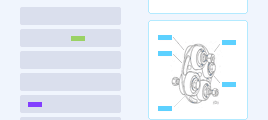Much energy has been poured into this sort of application for many years, and none of the efforts has thus far shown any success whatsoever.
Some past investigators were convinced that 900 MHz was a good choice (prompted in part by its being in an unregulated ISM radio band) but proximity to the
human body leads to poor RF propagation.
Other past investigators were convinced that higher frequencies (around 13 gigahertz) were good choices, but these frequencies use up battery power all too quickly.
Passive RF systems (e.g. RFID systems) have drawbacks of being readable only if a reader is very nearby, typically on the order of inches.
The potential for abuse of both new and used patch is high.
In some case the programmed regime may be incorrect or ineffective and it may be necessary to alter doses during administration of the drug.
This has the
disadvantage that the
agonist may be accidentally released and other dosage management issues are not addressed with this solution.
Much of the
patent literature and published literature surrounding these radio tags and RF-ID tags uses terminology that has not been well defined and can be confusing.
These two patents also teach that steel and other conductive metals may de-tune the antennas and degrade performance.
The
ceramic filter required to increase the frequency from 50 kHz to a
high frequency is, however, an expensive large external component, and phase locked loops or other methods commonly used to multiply a frequency would consume considerable power.
This non-radiating mode reduces the power required to operate a tag and puts the detection burden on the
base station.
HF and UHF tags are unable to use the carrier as a time base because it would require high speed chips and
power consumption would be too high.
However, the major
disadvantage of the back-scattered mode radio tag is that it has limited power, limited range, and is susceptible to
noise and reflections over a radiating active device.
As a result, many back-scattered tags do not work reliably in harsh environments and require a directional “line of site” antenna.
However, since all of these tags use high frequencies, the tags must continue to operate in back-scattered mode to conserve battery life.
Because these tags are active backscattered transponders, they cannot work in an on-demand peer-to-peer network setting, or require
line of sight antennas that provide a carrier that “illuminates” an area or zone or an array of carrier beacons.
These tags do provide full functionality and so-called Real-Time
Visibility, but they are expensive (over $100.00 US) and large (videotape-size, 6.25×2.125×1.125 inches) because of the power issues described above.
They must also use replaceable batteries since even with a 1.5-inch by 6-inch Li battery, these tags are only capable of 2,500 reads and writes.
Finally, active radiating
transceiver tags require large batteries and are expensive, perhaps costing up to hundreds of dollars.
One of the major disadvantages of a passive non-radiating
system is that it requires the use of handheld readers or portals to read tags and changes
in process control (e.g., U.S. Pat. No. 6,738,628: Electronic physical
asset tracking, 2004).
In previous disclosures, we have shown that the prior art has assumed
low frequency tags are slow, short-ranged, and too costly.
Many of the commercial organizations recommending these higher frequencies believe that passive and active radio tags in low frequencies are not suitable for any of these applications for reasons given above.
The transmission speed is inherently slow using ULF as compared to HF and UHF since the tag must communicate with low
baud rates because of the
low transmission carrier frequency.
Many sources of
noise exist at these ULF frequencies from electronic devices, motors, florescent ballasts, computer systems, and power cables.
Thus, ULF is often thought to be inherently more susceptible to
noise.
Radio tags in this frequency range are considered more expensive since they require a wound coil antenna because of the requirement for many turns to achieve optimal electrical properties (maximum Q).
ULF would also have even more serious distance limitations with such an antenna.
Current networking methods used by
high frequency tags, as used in HF and UHF, are impractical due to such low bandwidth of ULF tags described above in (3).
 Login to View More
Login to View More  Login to View More
Login to View More 


